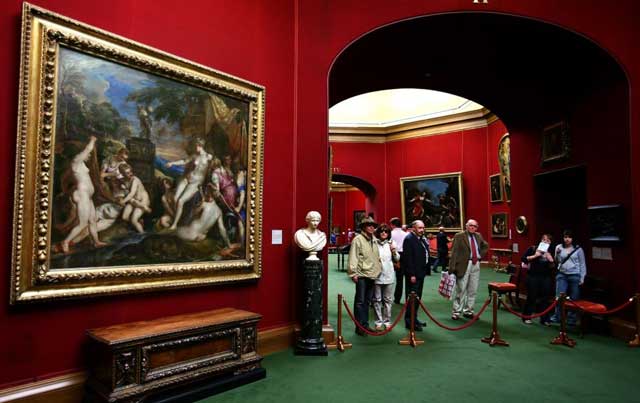Secret deal on Titian painting guarantees £50m to wealthy duke

A secret deal guaranteeing the purchase of two works of art by the Renaissance master Titian from the Duke of Sutherland has already been agreed, The Independent on Sunday can reveal.
There is also little danger of the paintings being sold to a private collector or leaving the country should a campaign to raise £50m by the end of this year to buy the first painting fail.
Although the campaign to buy the two Titians – part of the Duke's renowned Bridgewater collection which has been in his family for 220 years – was only announced this week, secret negotiations have been ongoing between the Duke and the National Galleries of Scotland and the National Gallery in London for a year.
The paintings have been on loan to the Scottish galleries since 1945. The Duke has now been advised to release £100m from his collection – valued by The Art Newspaper at £1bn – in order to "rebalance" his assets. He is believed to hold around £30m in other, non- art assets.
However, The Independent on Sunday has been told that part of those negotiations included a "firm understanding" that the two paintings – believed to be worth £150m each on the private market – should remain together. They were originally painted as a pair 450 years ago and have never been split up since.
John Leighton, director general of the National Galleries of Scotland, confirmed yesterday that the Scottish Parliament had already made a "significant and concrete" pledge to contribute towards the first purchase before the public announcement last week.
"It's been an ongoing process and we have been in discussion with the governments from an early stage," he said. The announced deal allows for the London and Scottish galleries to raise £50m by the end of the year for the first work, Diana and Actaeon. If successful, they then have four years in which to raise a second £50m to buy the second work, Diana and Callisto. Both works were completed in 1559.
The Duke will then pledge to leave the rest of the collection, comprising 27 works – including masterpieces by Rubens, Raphael and Poussin – on loan for at least 21 years.
Sources close to the deal have said the Treasury has already agreed to underwrite this second sale if private fundraising falls short. The Government, however, denies this, and Mr Leighton said such claims were "wildly optimistic".
A spokesman for the Department for Culture, Media and Sport (DCMS) said that negotiations across government departments were ongoing.
However, a source close to the deal said: "You can't expect the Treasury to admit that. It would undermine the effort to raise funds from private sources."
A second source said the "firm commitment" to the Duke to keep the paintings together also suggested a degree of confidence that the £100m can be raised.
If the fundraising effort fails, the Duke has indicated that he would sell other parts of the collection to release funds, rather than the Titians. "He will certainly be placing works from his collection on the open market if the Titians are not purchased by the galleries, but not necessarily these paintings," his spokesman said. "From our point of view the offer is there and the galleries are looking at it as urgently as they can. We have not been party to fundraising meetings," he added.
He said that the London and Scottish galleries did not have to take up their option of buying the second painting.
However, in that scenario, the Duke would only need to raise £50m and is unlikely to split the pair up by selling the single remaining Titian to a private buyer, who could remove the painting from the gallery. Instead, he would sell other works.
Although the spokesman said he was unaware of any formal arrangement to keep the two works together, he added: "I'm certain the Duke would wish to see the paintings stay together. The gallery, the Duke and everyone concerned would not want to see these paintings split up."
A spokeswoman for the DCMS said: "A number of bodies are likely to be approached in the campaign – the Art Fund, the National Heritage Memorial Fund, the Heritage Lottery Fund, the Scottish Executive, and the DCMS – but it is far too early to say what contribution, if any, the UK Government will be able to make.
"We are very aware that the culture sector has now received three generous settlements in a row from successive spending rounds and that there is no 'pot of gold' that can be drawn on."
Some sources in the art world have suggested that another reason the deal has been kept secret is because the Government did not want to be seen committing itself to making over such a large amount of public money to a wealthy aristocrat in the current economic climate.
To have your say on this or any other issue visit www.independent.co.uk/IoSblogs
Subscribe to Independent Premium to bookmark this article
Want to bookmark your favourite articles and stories to read or reference later? Start your Independent Premium subscription today.

Join our commenting forum
Join thought-provoking conversations, follow other Independent readers and see their replies